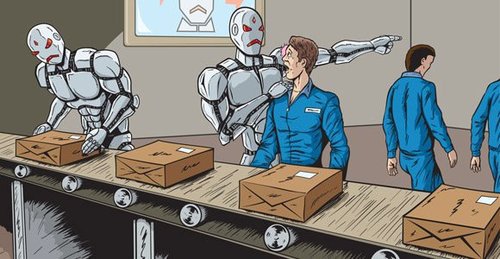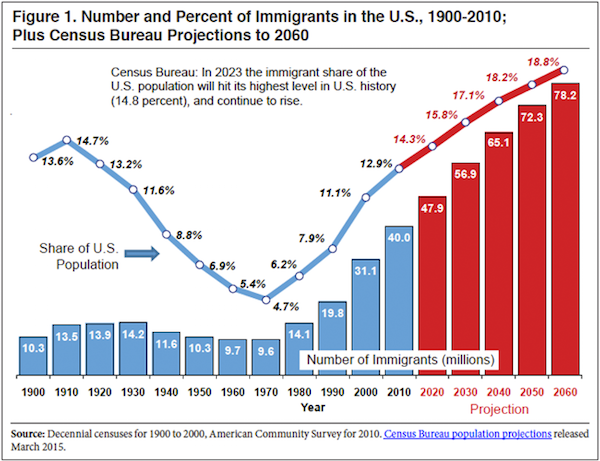A new report came out last week forecasting the likelihood of automation taking human jobs. The study comes from PwC (Price Waterhouse Cooper) and can be seen online at
UK Economic Outlook where the section about international automation begins on page 30.
The upshot is not quite as dreary as the 2013 Oxford study by Frey and Osborne which estimates nearly half of US jobs vulnerable within 20 years. Nor is the new investigation as hopeful as the 2016 paper from Arntz, Gregory and Zierahn titled The Risk of Automation for Jobs in OECD Countries which found a significantly lower number for Organisation for Economic Co-operation and Development nations (listed in OECD.org).
Here’s a snip of the PwC text leading up to an explanatory chart:
This debate was given added urgency in 2013 when researchers at Oxford University (Frey and Osborne, 2013) estimated that around 47% of total US employment had a “high risk of computerisation” over the next couple of decades – i.e. by the early 2030s.However, there are also dissenting voices. Notably, Arntz, Gregory and Zierahn (OECD, 2016) last year re-examined the research by Frey and Osborne and, using an extensive new OECD data set, came up with a much lower estimate that only around 10% of jobs were under a “high risk of computerisation”. This is based on the reasoning that any predictions of job automation should consider the specific tasks that are involved in each job rather than the occupation as a whole.
In this article we present the findings from our own analysis of this topic, which builds on the research of both Frey and Osborne (hereafter ‘FO’) and Arntz, Gregory and Zierahn (hereafter ‘AGZ’). We then go on to discuss caveats to these results in terms of non-technological constraints on automation and potential offsetting job creation elsewhere in the economy (though this is much harder to quantify).
The following chart compares the PwC findings with the earlier reports:
![]()
The chart illustrates the comparison of estimates well, but leaves out the all-important time projection, which is the first key point, found on page 30:
Our analysis suggests that up to 30% of UK jobs could potentially be at high risk of automation by the early 2030s, lower than the US (38%) or Germany (35%), but higher than Japan (21%).
The mid-range PwC estimate is still very tough at 38 percent job loss — during the
worst point of the Great Depression in 1933, America’s unemployment rate was 25 percent.
In addition, the US government’s immigration machine remains stuck on auto-pilot, importing more than one million legal immigrants annually. Why continue this outdated policy when workplace opportunities are about to shrink dramatically? It’s not like America needs workers for the factories, when the US has lost more than seven million factory jobs since manufacturing employment peaked in 1979, yet production is barreling along at near-record levels. Advanced machines are propelling a manufacturing revolution.
So America doesn’t need to import foreign workers at all going forward. In fact,
Automation makes immigration obsolete.
This kind of immigration-fueled population growth needs to stop. Hordes of unemployed foreigners are unlikely to be peaceful when jobs disappear.
![]()
Plus, it’s disappointing that the Treasury Secretary is so clueless about technology, as reported in La Times:
Robots could take over 38% of U.S. jobs within about 15 years, report says, Los Angeles Times, March 24, 2017The automation of factories is a big factor for job loss in the U.S.
More than a third of U.S. jobs could be at “high risk” of automation by the early 2030s, a percentage that’s greater than in Britain, Germany and Japan, according to a report released Friday.
The analysis by accounting and consulting firm PwC focused primarily on the economic outlook in Britain, but it included a section on automation in Britain and elsewhere.
In the U.S., 38% of jobs could be at risk of automation, compared with 30% in Britain, 35% in Germany and 21% in Japan.
The report emphasizes that these estimates are based on the anticipated capabilities of robotics and artificial intelligence by the early 2030s, and that the pace and direction of technological progress are “uncertain.”
The key issue is not that the U.S. has more jobs in sectors that are universally ripe for automation, the report says; rather, it’s that more U.S. jobs in certain sectors are potentially vulnerable than, say, British jobs in the same sectors.
For example, the report says the financial and insurance sector has much higher possibility of automation in the U.S. than in Britain. That’s because, it says, American finance workers are less educated than British ones.
While London finance employees work in international markets, their U.S. counterparts focus more on the domestic retail market, and workers “do not need to have the same educational levels,” the report said. Jobs that require less education are at higher potential risk of automation, according to the report.
Other industries that could be at high risk include hospitality and food service and transportation and storage.
Analysts have said truck driving probably will be the first form of driving in the U.S. to be fully automated, as long-range big rigs travel primarily on highways — the easiest roads to navigate without human intervention.
But robots won’t necessarily replace so many human workers. The report highlights several economic, legal and regulatory hurdles that could prevent automation, even in jobs where it would be technologically feasible.
For one, the cost of robots — including maintenance and repairs — could still be too expensive compared with human workers. And in the case of self-driving vehicles, questions remain about who is liable in an accident.
In other words, moving robots outside of a controlled environment is “still a big step,” said John Hawksworth, chief economist at PwC in Britain.
Treasury Secretary Steven Mnuchin said Friday that he wasn’t worried about artificial intelligence taking over American jobs.
“I think we’re so far away from that that it’s not even on my radar screen,” he told Axios Media. “I think it’s 50 or 100 more years.”
Mnuchin also said automation would enable human workers to do more productive jobs at higher wages. “It’s taken jobs that are low-paying,” he said. “We need to make sure we are investing in education and training for the American worker.”
Automation could end up creating some jobs, the PwC report said. Greater robotic productivity could boost the incomes of those behind the new technology, which Hawksworth said could flow into the larger economy.
Sectors that are harder to automate, such as healthcare, could also see a rise in jobs, he said.















